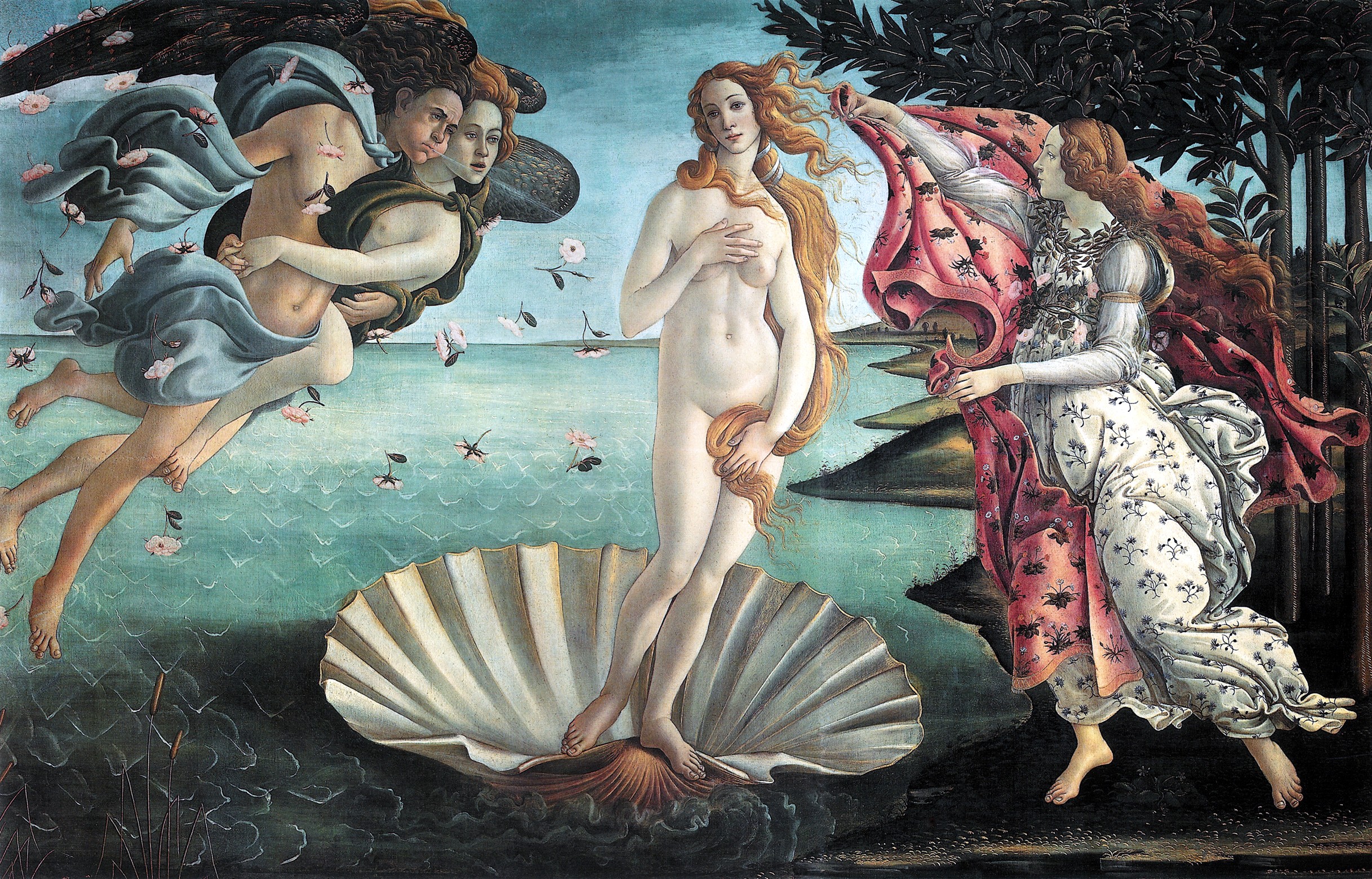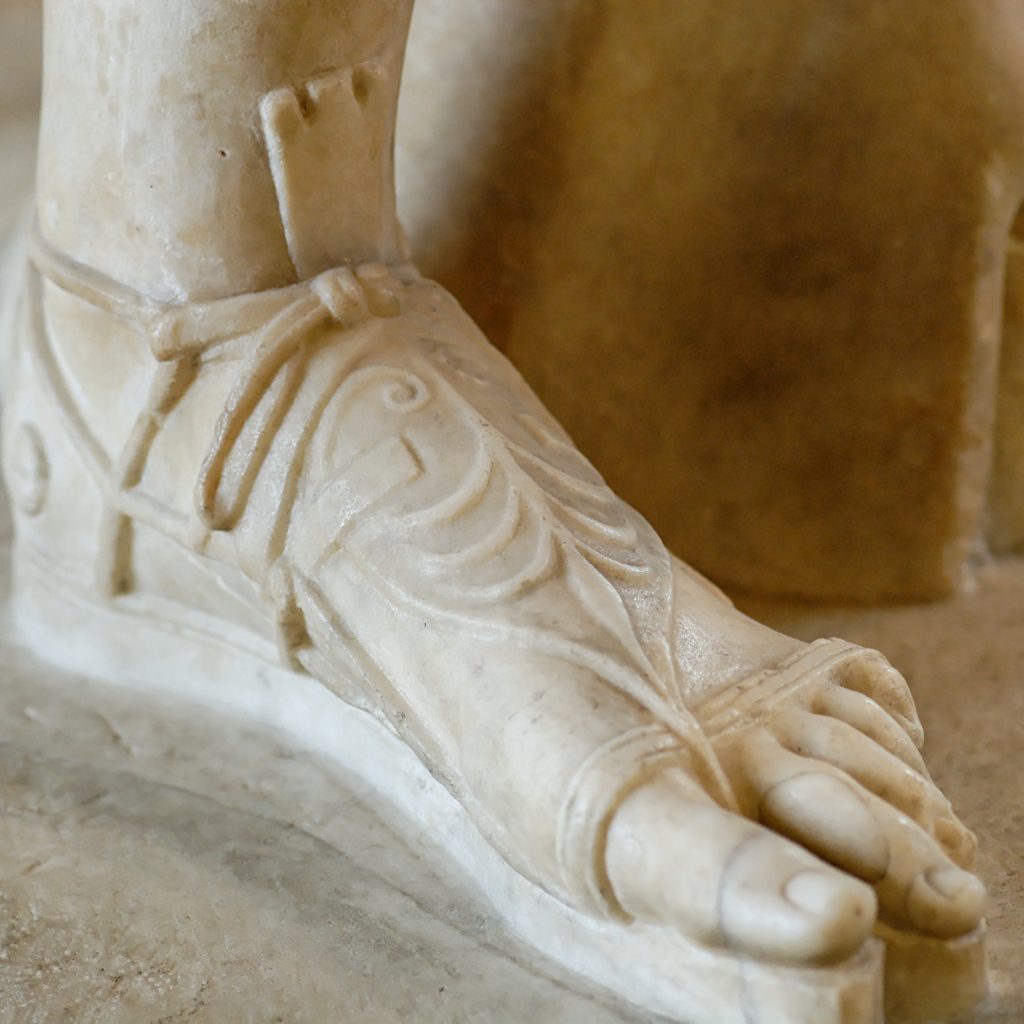Do Your Toes Share the Traits of a Greek Goddess?

Venus de Milo has it. Leonardo de Vinci’s Vitruvian man has it, even the Statue of Liberty has it. If you’re one of about 15-20 percent of the population, you have it too. Congratulations, that means you are worthy of modeling for an ancient Greek statue.
What is it that gives you this honor? Why your toes of course. Well, actually it’s one toe in particular. The second one and it sticks out farther than your big toe. Sculptors and painters in the classical, Hellenistic, Neoclassical and Renaissance periods all went to sleep at night dreaming of the perfect model and her beautiful long second toe.
Now, not every culture shared the same feelings as the Greek and Renaissance artists. Egyptians loved everything properly measured, and they used what’s known as the canon of proportion. What that means, in a nutshell, is although measurements vary from one person to another, the relationship of one body part to another stays the same. Toes, therefore, should be nice and tidy. Flamboyant and unruly second toes would not be tolerated.

Golden Toes
Then along came the Greeks. Everything evenly spaced might have been good for the Egyptians, but to the Greeks that was boring. Instead of the canon of proportion, they followed the golden ratio, or as they called it in the 1500s divine proportion. It’s all centered in geometry, which the Greeks loved. They looked for these proportions everywhere—even in toes. That’s how the large second toe became known as a Greek toe. In modern times, it’s also known as Morton’s toe.
Dudley Morton was a 20th-century American orthopedic surgeon. Old Doc Morton believed that the toe was a gift from our pre-human ancestors so we could swing from trees with greater ease. That’s good if you’re a monkey, but it’s not nearly as sophisticated as being compared to a beautiful Greek statue.
What Do Your Toes Say About YOU?
If you have Greek toes, you can also say you have flame feet or fire feet. Don’t like either of those? How about royal toe, shepherds toe, or Viking toe? No matter what name you give it, this toe is artistic. Think about it. You share the same toes as the Roman goddess Venus; goddess of love, pleasure, and fertility. You are a woman of ethereal beauty. People with the Greek toe are thought to be creative, have great leadership qualities and tend to be the life of the party. Of course, you might also have to put up with bunions, excessive inward rotation, and difficulty finding shoes that fit. I urge you to forget all that. Just put on some sandals, take your sore footsies to the nearest art gallery, and bask in the camaraderie of your glorious ancient Greek predecessors.
Sources:
https://www.atlasobscura.com/articles/mortons-toe-greek-foot
https://www.codingstrategies.com/blog/toes-venus
https://guff.com/how-your-feet-are-shaped-can-say-a-lot-about-who-you-are
https://www.podiatrygroupofgeorgia.com/what-do-your-feet-say-about-your-personality/


Susan Morrison | 21st Oct 19
Great history lesson! Thanks!
nicolvalentin | 22nd Oct 19
Thanks so much, Susan!
Kenneth Aydlott | 30th Oct 19
Looks like comments are working. Interesting history topic: toes. Not quite as good as railroad track spacing, ‘though.
nicolvalentin | 30th Oct 19
thank you, Ken. I’ll check out those railroad tracts. 😉